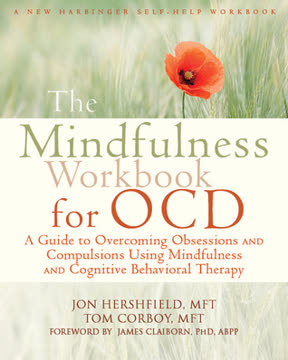Key Takeaways
1. OCD Involves a Brain, a Mind, and You: Understanding the distinction is key.
Mindfulness is a concept grounded in the idea that you can observe what your mind is doing and decide for yourself how involved you want to be in the process.
Three Separate Entities. To master OCD, recognize the distinction between your brain (the physical organ), your mind (the processor of thoughts and feelings), and you (the observer). This separation allows you to detach from the content of your thoughts and choose how to respond.
The Mind as a Processor. The mind filters, promotes, and rejects data from the brain, adding meaning and color. Mindfulness helps you observe this process without automatically identifying with it. You are the witness, not the content.
Breaking the Cycle. OCD often makes you feel like a slave to your thoughts. By developing the ability to observe your mind, you can choose measured responses instead of automatic reactions, breaking the cycle of obsessions and compulsions.
2. Mindfulness: Observe Thoughts Without Judgment.
Mindfulness is acknowledging and accepting whatever is happening in the present moment exactly as it is.
Present Moment Awareness. Mindfulness is about paying attention on purpose, in the present moment, and nonjudgmentally to the unfolding of experience. It's about remembering to be aware, or sati, as the Buddha called it.
Thoughts as Empty Vessels. View thoughts as words: empty vessels given power after the mind organizes and considers them. The thought of being contaminated isn't the same as being contaminated. It's a thought of it.
Meditation as Practice. Meditation is simply practicing mindfulness. It's setting aside time to stop resisting the present experience and to simply notice it. The practice is truly straightforward: tether your attention to one thing (e.g., the experience of breathing, sitting, or hearing) and acknowledge whenever your attention strays from that thing.
3. Cognitive Therapy: Challenge Distorted Thinking Patterns.
If you can notice when you engage in cognitive distortions, you can identify them as part of the OCD.
Identifying Cognitive Distortions. Cognitive distortions are faulty beliefs or lenses that distort your thoughts, leading to dysfunctional behavior. Common distortions in OCD include all-or-nothing thinking, catastrophizing, and emotional reasoning.
Challenging Distortions Mindfully. Challenge the distortion, not the thought itself. For example, instead of trying to convince yourself that you are clean, challenge the notion that because you had a thought about being dirty, you must wash.
Automatic Thought Records. Use automatic thought records to document triggers, identify automatic thoughts, and shift them toward a more objective stance. This helps you create alternative responses to OCD thoughts.
4. Behavioral Therapy: Exposure and Response Prevention (ERP) is Key.
You only get to decide what you do with your thoughts, not what thoughts you have.
Exposure and Response Prevention (ERP). ERP involves systematic, repeated, and prolonged exposure to situations that provoke obsessional fear, along with abstinence from compulsive behaviors. It's about getting time in the ring with your fears instead of constantly running.
Inhibitory Learning. ERP works by creating new associations with triggers, replacing the trigger-danger-response pairing with a trigger-new response pairing. Key elements include anxiety tolerance, disconfirming expectations, surprise, combining fear cues, and variety.
Types of Exposure. Exposure can be in vivo (confronting fears in real life) or imaginal (writing and repeatedly reading a script about your fears). Constant contamination exposures and interoceptive exposures (recreating feared bodily sensations) can also be effective.
5. Compulsions: Identify and Resist the Urge.
Choosing not to engage in a compulsion is always an act of mindfulness.
Compulsions as Avoidance. All compulsions are a form of avoidance, an attempt to distance yourself from uncomfortable thoughts and feelings. Common compulsions include washing, checking, reassurance seeking, and mental rituals.
The Compulsive Cycle. Obsessions lead to distress, which leads to compulsions, which provide temporary relief but reinforce the compulsive behavior. Breaking this cycle requires identifying and resisting compulsions.
Mindfulness for Compulsions. Mindfulness helps you see where the seed of the compulsion is planted. It's the art of waiting, of choosing to respond to your mind by acknowledging its message but not acting on it.
6. Acceptance, Assessment, Action: A Practical Approach to OCD.
The power of noticing when your thinking is distorted is the crossroad between cognitive therapy and mindfulness.
The AAA Framework. A simple, practical approach to managing OCD involves three steps: Acceptance of your experience, Assessment of your thought process, and Action you can take toward mastery over your obsessions.
Acceptance First. Start by using mindful awareness to shift your perspective and let go of resisting the presence of unwanted thoughts, feelings, and sensations. This doesn't mean agreeing with the thoughts, but acknowledging their presence.
Assess Distortions. Use cognitive therapy skills to assess the nature of your relationship to the intrusive OCD thought or feeling. Identify and challenge cognitive distortions that fuel compulsive urges.
7. Contamination OCD: Confronting Dirt and Disgust.
You don’t have to touch feces or blood or toxic chemicals to overcome a fear of being contaminated by these things.
Triggers and Compulsions. Contamination OCD involves fears of getting or spreading germs or diseases, leading to compulsions like excessive washing, avoidance, and reassurance seeking. The goal is to get some time in the ring with your fears instead of constantly running.
Acceptance and Mindfulness. Mindfully accept the feeling of contamination and allow yourself to see the bigger picture. The bigger picture is that no amount of washing ever gets you "clean," because your definition of the word "clean" necessarily involves experiencing a specific feeling that you call "clean."
Exposure and Response Prevention. ERP involves increasing contact with feared contaminants and decreasing washing rituals. The goal is to walk away from the shower, the sink, or wherever your decontamination rituals take place feeling imperfect, irresponsible, unclean, and uncertain.
8. Responsibility/Checking OCD: Letting Go of the Need for Certainty.
The door feels locked, and the stove feels shut off.
The Urge to Check. Responsibility/Checking OCD involves a heightened sense of responsibility for preventing tragic events, leading to compulsions like repeated checking of locks, appliances, and other items.
Acceptance of Uncertainty. Mindfulness involves acknowledging the urge to check, the thought about an item going unchecked, and the feeling that something isn't the way it's supposed to be, and choosing to move forward anyway.
Challenging Catastrophizing. Cognitive restructuring involves challenging the catastrophizing and overestimating of responsibility that drive the checking urge. The goal is to embrace mindful acceptance of the triggering situation and to make the choice not to do compulsions.
9. Harm OCD: Accepting Violent Thoughts Without Action.
The primary difference between people with OCD and those without it is not the content of the thoughts, but their perspective on the thoughts.
Intrusive Violent Thoughts. Harm OCD focuses on unwanted, intrusive thoughts of a violent or aggressive nature, leading to fears of harming others or yourself.
Acceptance of Thoughts. Mindfulness involves accepting that these thoughts are normal and that you are not your thoughts. It's about acknowledging the thoughts without judgment and choosing not to act on them.
Exposure and Response Prevention. ERP involves confronting the fear of having violent thoughts and resisting the urge to engage in compulsions like avoidance, reassurance seeking, and mental rituals.
10. Sexual Orientation OCD (SO-OCD): Embracing Uncertainty About Identity.
The primary difference between people with OCD and those without it is not the content of the thoughts, but their perspective on the thoughts.
Uncertainty About Orientation. SO-OCD involves obsessive doubts and fears about one's sexual orientation, leading to compulsions like mental review, reassurance seeking, and avoidance.
Acceptance of Thoughts. Mindfulness involves accepting the presence of unwanted thoughts about sexual orientation without judgment. It's about acknowledging that these thoughts are just thoughts, not indicators of your true identity.
Exposure and Response Prevention. ERP involves confronting triggers that provoke doubts about your sexual orientation and resisting the urge to engage in compulsions. This might involve looking at triggering images or visiting places associated with the feared orientation.
11. Scrupulosity OCD: Reconciling Faith and Mental Health.
The primary difference between people with OCD and those without it is not the content of the thoughts, but their perspective on the thoughts.
Religious and Moral Obsessions. Scrupulosity OCD targets people who place a high value on morality, ethics, and religious doctrine, leading to obsessions about sin, guilt, and failing to adhere to religious or moral standards.
Acceptance of Imperfection. Mindfulness involves accepting that you are not perfect and that you will make mistakes. It's about letting go of the need for certainty and embracing the gray areas of morality and faith.
Exposure and Response Prevention. ERP involves confronting situations that trigger scrupulous thoughts and resisting the urge to engage in compulsions like excessive prayer, confession, and reassurance seeking.
12. Existential OCD: Finding Peace in the Unanswerable.
The primary difference between people with OCD and those without it is not the content of the thoughts, but their perspective on the thoughts.
Obsessions About Existence. Existential OCD involves obsessive thoughts about the meaning of life, the nature of reality, and other philosophical questions, leading to anxiety and compulsions.
Acceptance of Uncertainty. Mindfulness involves accepting that some questions have no answers and that it's okay to live with uncertainty. It's about letting go of the need to figure everything out and embracing the mystery of existence.
Exposure and Response Prevention. ERP involves confronting existential questions and resisting the urge to engage in compulsions like excessive researching, theorizing, and reassurance seeking.
Last updated:
FAQ
1. What is "The Mindfulness Workbook for OCD" by Jon Hershfield and Tom Corboy about?
- Integrative self-help guide: The book combines mindfulness and cognitive behavioral therapy (CBT) to help readers manage and overcome obsessive-compulsive disorder (OCD).
- Practical workbook format: It offers hands-on exercises, meditations, and thought records to help readers apply concepts directly to their lives.
- Covers OCD subtypes: The workbook addresses a wide range of OCD themes, including contamination, checking, harm, sexual orientation, scrupulosity, and more.
- Emphasis on acceptance: The authors focus on accepting thoughts, feelings, and sensations as they are, rather than trying to eliminate or control them.
2. Why should I read "The Mindfulness Workbook for OCD" by Jon Hershfield and Tom Corboy?
- Evidence-based approach: The book is grounded in the latest research on mindfulness, CBT, and exposure and response prevention (ERP) for OCD.
- Compassionate and relatable: The authors, both experienced therapists, write with empathy, humor, and personal insight, making complex concepts accessible.
- Comprehensive coverage: It addresses both the general principles of OCD treatment and specific strategies for various OCD subtypes.
- Useful for self-help or adjunct: The workbook can be used independently or as a supplement to professional therapy.
3. What are the key takeaways from "The Mindfulness Workbook for OCD"?
- Mindfulness is essential: Mindful awareness helps separate the person from their thoughts, reducing the power of obsessions.
- Acceptance over avoidance: Accepting unwanted thoughts and feelings, rather than resisting or suppressing them, is crucial for recovery.
- Cognitive distortions fuel OCD: Identifying and challenging distorted thinking patterns is a core part of the healing process.
- ERP is central: Exposure and response prevention, combined with mindfulness, is the most effective behavioral strategy for overcoming compulsions.
4. How do Jon Hershfield and Tom Corboy define mindfulness in the context of OCD?
- Present-moment awareness: Mindfulness is described as paying attention, on purpose, in the present moment, and nonjudgmentally to one’s experience.
- Observing thoughts, not fusing: The authors emphasize noticing thoughts, feelings, and sensations as events in the mind, not as facts or threats.
- Acceptance of discomfort: Mindfulness involves accepting whatever arises, including anxiety and intrusive thoughts, without trying to change or avoid them.
- Foundation for change: Developing a mindful relationship with one’s mind is presented as the key to mastering OCD.
5. What is the role of Cognitive Behavioral Therapy (CBT) in "The Mindfulness Workbook for OCD"?
- Identifying cognitive distortions: CBT helps readers recognize and challenge faulty beliefs and thinking patterns that drive compulsions.
- Thought records and restructuring: The workbook provides tools like automatic thought records to practice reframing obsessive thoughts.
- Behavioral experiments: CBT is used to test out new ways of responding to obsessions, reducing the need for compulsions.
- Integration with mindfulness: The authors show how mindfulness enhances CBT by fostering acceptance and reducing over-engagement with thoughts.
6. How does "The Mindfulness Workbook for OCD" explain Exposure and Response Prevention (ERP)?
- Facing fears directly: ERP involves intentionally exposing oneself to feared thoughts, situations, or sensations without performing compulsions.
- Breaking the OCD cycle: By resisting compulsions, the brain learns that anxiety and discomfort can be tolerated and will decrease over time.
- Hierarchical approach: The workbook guides readers to create a hierarchy of feared situations and gradually work through them.
- Mindfulness during ERP: Mindfulness is used to stay present with discomfort during exposures, rather than escaping or neutralizing it.
7. What are the most common cognitive distortions in OCD, according to "The Mindfulness Workbook for OCD"?
- All-or-nothing thinking: Viewing situations in black-and-white terms, such as being completely safe or completely contaminated.
- Catastrophizing: Predicting the worst possible outcome and underestimating one’s ability to cope.
- Emotional reasoning: Believing that feelings (e.g., anxiety, guilt) are evidence of reality or danger.
- Overestimating responsibility: Assuming excessive responsibility for preventing harm or negative outcomes.
- Magical thinking/thought-action fusion: Believing that having a thought is equivalent to acting on it or making it more likely to happen.
8. How does "The Mindfulness Workbook for OCD" address different OCD subtypes and themes?
- Dedicated chapters: The book provides specific chapters for common OCD themes, such as contamination, checking, harm, sexual orientation, scrupulosity, and more.
- Tailored strategies: Each subtype is addressed with mindfulness, cognitive, and behavioral tools relevant to its unique challenges.
- Real-life examples: The workbook includes relatable scenarios and exercises for each OCD theme to help readers apply the concepts.
- Emphasis on universality: The authors stress that, despite different content, the underlying OCD mechanisms and treatment principles are similar.
9. What practical exercises and tools are included in "The Mindfulness Workbook for OCD"?
- Meditation practices: Step-by-step instructions for basic breathing meditation, progressive muscle relaxation, and walking meditation.
- Automatic thought records: Templates for identifying triggers, automatic thoughts, and alternative, more mindful responses.
- Exposure hierarchies: Worksheets to list and rank feared situations for ERP.
- Acceptance scripts and imaginal exposures: Guided writing exercises to help readers face and accept their worst fears in a controlled way.
10. How does "The Mindfulness Workbook for OCD" help readers resist compulsions?
- Mindful observation: Encourages noticing the urge to perform compulsions without acting on it, creating space between thought and action.
- Acceptance of uncertainty: Teaches that resisting compulsions means tolerating not knowing and accepting discomfort as part of recovery.
- Labeling and delaying: Suggests labeling compulsive urges and practicing waiting before responding, which weakens the compulsion over time.
- Compassionate self-talk: Promotes self-kindness and nonjudgment when lapses occur, reducing shame and self-criticism.
11. What advice does "The Mindfulness Workbook for OCD" give for maintaining progress and handling setbacks?
- Expect lapses: The authors normalize setbacks and distinguish between temporary lapses and full relapses.
- Stress management: Identifies stressors (e.g., life events, hormonal changes) that can exacerbate OCD and offers mindfulness strategies to cope.
- Ongoing practice: Emphasizes that mindfulness and CBT skills require regular, lifelong practice for sustained improvement.
- Seeking support: Encourages readers to seek professional help when needed and to involve supportive others in their recovery.
12. What are some of the best quotes from "The Mindfulness Workbook for OCD" and what do they mean?
- “You are the one who is aware of your thoughts. This is a completely different way of framing reality than believing that you are the content of the thoughts themselves.”
Meaning: This quote highlights the core mindfulness principle of observing thoughts rather than identifying with them, which is crucial for OCD recovery. - “To be mindful is to make the present moment the priority it really is, to choose to experience it fully, even the unwanted thoughts, as they are, right now, because there will never be another moment quite like this.”
Meaning: Emphasizes the importance of present-moment awareness and acceptance, even when the present is uncomfortable. - “The goal is not to prove your fears away, but to demonstrate to your mind that you can be in the presence of your fear without having to respond to it with compulsions.”
Meaning: Shifts the focus from eliminating fear to building tolerance and resilience, which is the heart of ERP and mindfulness. - “Every act of embracing uncertainty is an act of defiance against OCD, and that is what makes a good exposure.”
Meaning: Encourages readers to see acceptance of uncertainty as a victory over OCD, rather than something to be avoided.
Review Summary
The Mindfulness Workbook for OCD receives high praise for its comprehensive, compassionate approach to treating OCD using mindfulness and cognitive behavioral therapy. Readers appreciate its practical exercises, clear explanations of OCD mechanisms, and tailored strategies for various OCD subtypes. Many found it empowering, insightful, and immediately applicable to their struggles. The book's emphasis on acceptance, challenging distorted thoughts, and exposure techniques resonated with both OCD sufferers and mental health professionals. Some readers noted its effectiveness when used in conjunction with therapy.
Similar Books
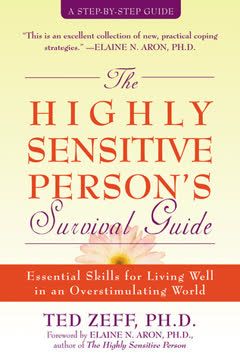
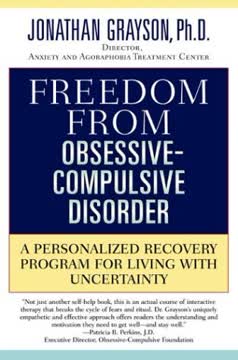

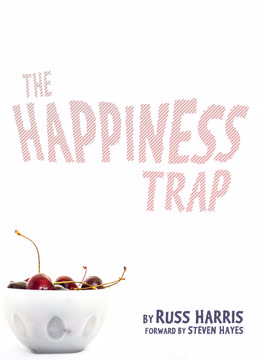
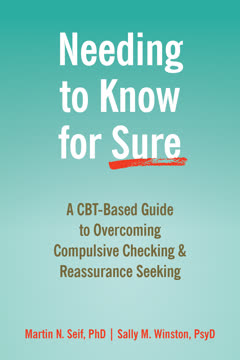
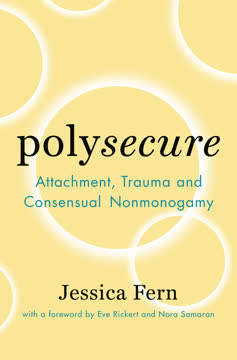
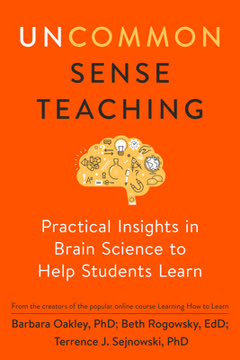

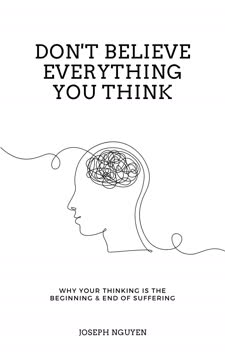
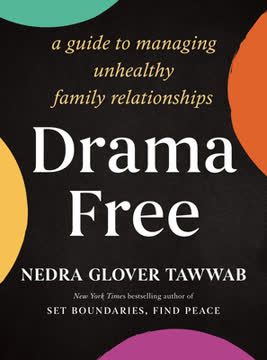
Download PDF
Download EPUB
.epub digital book format is ideal for reading ebooks on phones, tablets, and e-readers.
